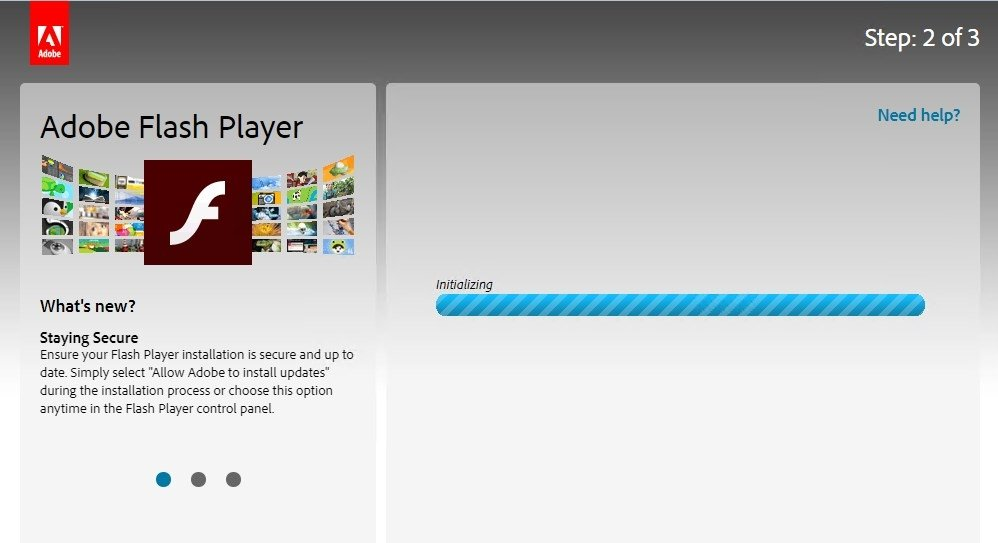Download Link!
Adobe Flash Player: A Nostalgic Journey Through Cyber Time
Remember those days when you could immerse yourself in interactive web experiences, play captivating online games, and watch animated videos seamlessly? Adobe Flash Player was the unsung hero behind those experiences, shaping the internet landscape for over two decades. However, as technology evolved, so did the web standards, leading to the inevitable decline of this once-revered software.
What is Adobe Flash Player?
Adobe Flash Player, initially developed by Macromedia, revolutionized the way multimedia content was presented on the web. Its launch in 1996 marked the beginning of an era where animations, games, and rich media could be seamlessly integrated into websites, captivating audiences worldwide.
Features
Flash Player boasted features like vector graphics, audio, and video playback, making it the go-to platform for developers to create engaging content. Its versatility and compatibility across various platforms made it a staple for interactive web experiences.
The Rise and Fall
Dominance in Web
For years, Adobe Flash Player dominated the web landscape, powering countless websites and serving as the backbone for interactive content. It was the driving force behind popular online games, multimedia-rich websites, and interactive advertisements.
Decline
However, the rise of mobile devices and the emergence of open web standards, such as HTML5, gradually rendered Flash obsolete. Compatibility issues, security vulnerabilities, and performance concerns led to its decline in popularity.
Impact on Web Development
Transition to HTML5
With the advent of HTML5, developers found a more efficient and secure alternative to Flash. HTML5 offered native support for multimedia elements, eliminating the need for third-party plugins like Flash Player. This transition marked a significant shift in web development practices, paving the way for a more standardized and accessible web.
Flash Alternatives
As Flash Player became increasingly obsolete, developers sought alternative technologies to deliver rich web experiences. Technologies like WebGL, CSS3, and JavaScript emerged as viable alternatives, offering improved performance, security, and compatibility.
Security Concerns
Vulnerabilities
One of the major drawbacks of Adobe Flash Player was its susceptibility to security vulnerabilities. Over the years, numerous exploits and vulnerabilities were discovered, making Flash a prime target for cyber attacks and malware distribution.
End of Support
In December 2020, Adobe officially ended support for Flash Player, marking the end of an era. This decision was driven by the widespread adoption of modern web standards and the increasing security risks associated with Flash.
Conclusion
While Adobe Flash Player may have played a pivotal role in shaping the early internet, its legacy is marred by security concerns and obsolescence. As we bid farewell to Flash, we usher in a new era of web development characterized by open standards, enhanced security, and unparalleled creativity.
FAQs
Why did Adobe Flash Player become obsolete?
Adobe Flash Player became obsolete due to the rise of mobile devices, compatibility issues, security vulnerabilities, and the emergence of open web standards like HTML5.
What are the alternatives to Adobe Flash Player?
Alternatives to Adobe Flash Player include technologies like HTML5, WebGL, CSS3, and JavaScript, which offer improved performance, security, and compatibility.
Is Adobe Flash Player still supported?
No, Adobe officially ended support for Flash Player in December 2020, citing the widespread adoption of modern web standards and security concerns.
Are there any security risks associated with Adobe Flash Player?
Yes, Adobe Flash Player was plagued by security vulnerabilities over the years, making it a prime target for cyber attacks and malware distribution.
What is the future of web development post-Flash era?
The future of web development post-Flash era is characterized by open standards, enhanced security, and unparalleled creativity, with technologies like HTML5 leading the way towards a more standardized and accessible web.



![Download FL Studio Pre-Activated Full Version 100% Free [Updated]](https://blogger.googleusercontent.com/img/a/AVvXsEgOYpLsvWCSRxIZ96jaP3_k8ZaCcWUPLc71CyazQeqsLkO0tzTWHxansBDxyaL0QPJemIAMk8x6c65W_pf1ZXizXg5zwTl9N-PkTULyrTQUz5vRWLGVDV1E6K6xj_2TozEqJ5DmOF9l2SWgclJjp9H8XcNIPSg4aJ6PZlGaUjXNREsAZTBj4mDwz0SuIBbE=w72-h72-p-k-no-nu)




![Driver Easy Pro 2024 Pre-Activated Latest Version Free Download [100% Working]](https://blogger.googleusercontent.com/img/a/AVvXsEj8Gi7x0-ZB1WA-e_M5qLtK-i5kI2BlT6bv9fIS-3WQJP8EoFir84JiHGcqEfOkCxZ58unmo5Gg-imft220F3yCHdyTd8h-er1iknb53XTuQ_gAinWR2WJkyguPH0qnRPwZpjbZMunSfNLtqyL-xEjQrNOJyTiRBAHS0Kd6pJDvAlsnMIj_8kA4GqH85C3l=w72-h72-p-k-no-nu)